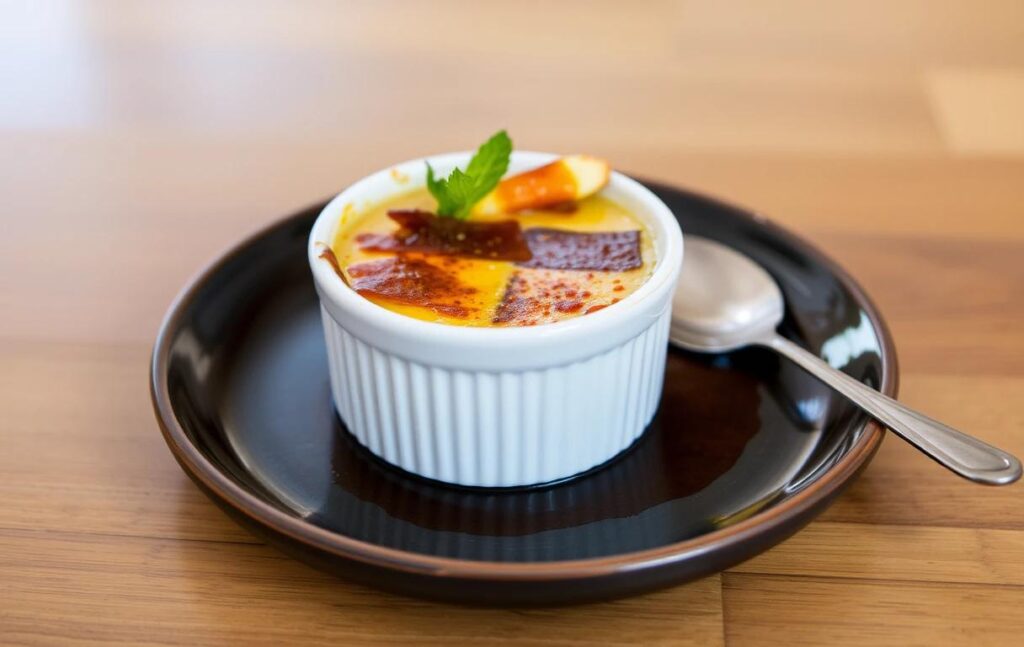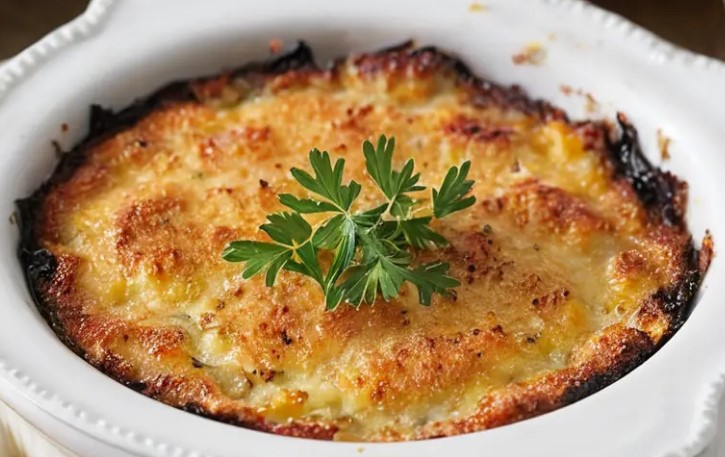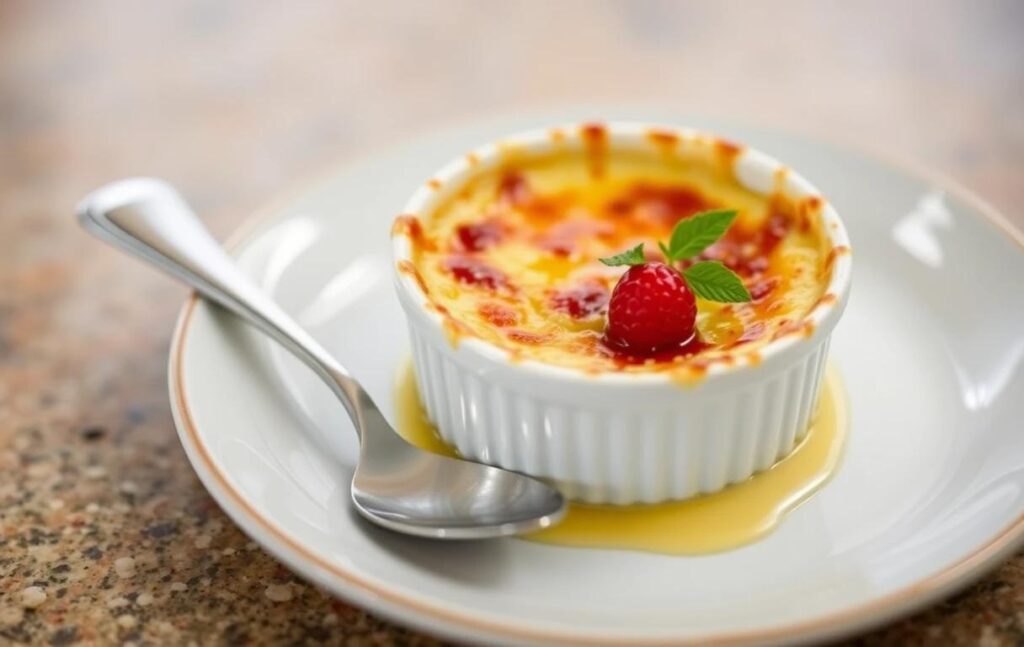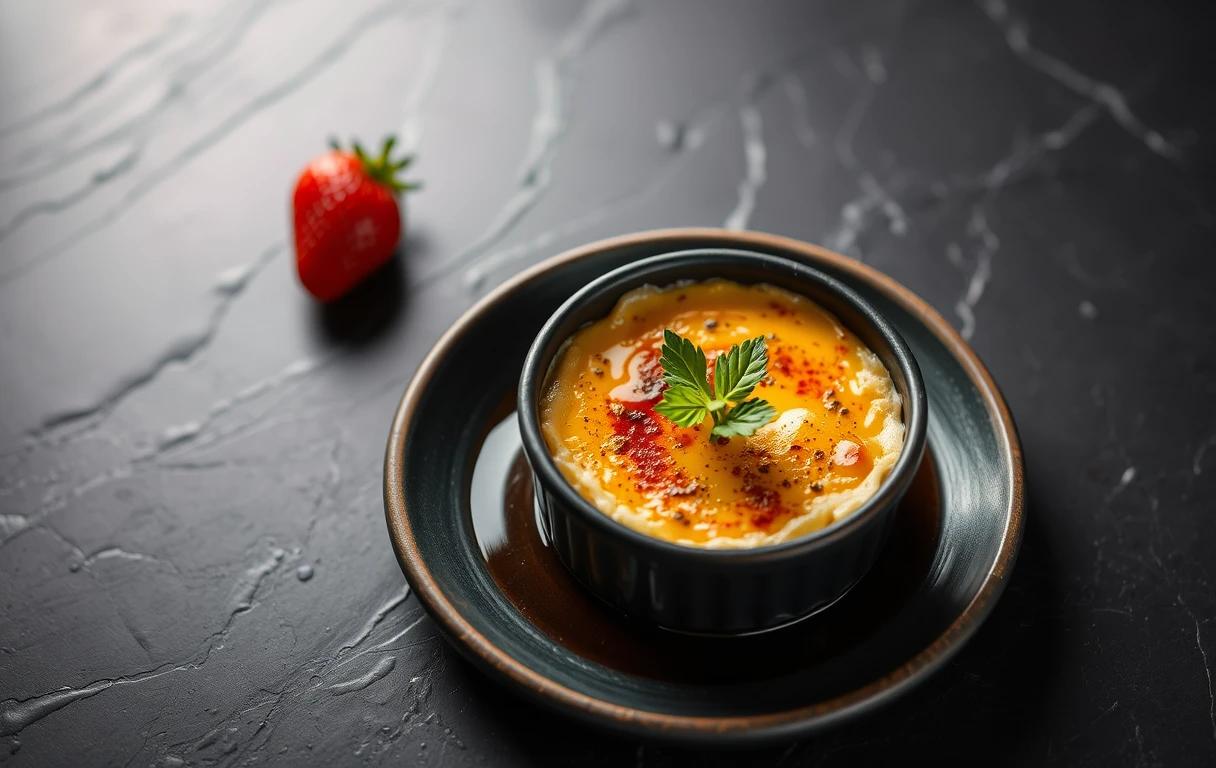crab brulee recipe
Crab Brulee is a sophisticated and creamy appetizer that blends the delicate sweetness of crab meat with the rich, velvety texture of a brulee. Perfect for special occasions, this dish captures the essence of fine dining while being surprisingly easy to prepare at home. By combining simple yet high-quality ingredients, you can create a memorable culinary experience that impresses both the palate and the eye.
Crab Brulee originates from the intersection of classic French techniques and coastal seafood traditions. It’s a savory take on the iconic crème brûlée dessert, using crab as the star ingredient and a crispy caramelized crust for texture. Whether you’re hosting a dinner party or treating yourself to something special, this dish is sure to make a lasting impression.
In this guide, we’ll walk through everything you need to know to master the art of Crab Brulee. From sourcing fresh crab meat to achieving the perfect caramelized top, you’ll learn techniques, tips, and variations that make this recipe adaptable and foolproof.
Ingredients for Crab Brulee
To create an unforgettable Crab Brulee, you’ll need a balance of fresh seafood, rich dairy, and flavorful seasonings. The key to success lies in selecting high-quality ingredients and understanding how each component contributes to the dish’s unique flavor and texture.
Essential Ingredients
- Fresh Crab Meat
- Quantity: 1 pound (approximately 450 grams)
- Type: Use fresh lump crab meat or claw meat for the best texture and flavor. If fresh isn’t available, high-quality canned or frozen crab meat can work, but ensure it’s properly drained.
- Heavy Cream
- Quantity: 1 cup (240 ml)
- Purpose: Heavy cream provides the creamy, custard-like base for the brulee. It’s essential for achieving the rich texture associated with this dish.
- Egg Yolks
- Quantity: 4 large yolks
- Purpose: Egg yolks bind the mixture and create a silky custard consistency.
- Parmesan Cheese (Grated)
- Quantity: ½ cup (50 grams)
- Purpose: Adds a savory, nutty flavor that complements the sweetness of the crab.
- Shallots (Finely Chopped)
- Quantity: 1 small shallot
- Purpose: Enhances the depth of flavor with its mild, sweet onion taste.
- Garlic (Minced)
- Quantity: 1 clove
- Purpose: Provides a subtle, aromatic note that enhances the overall taste.
- White Wine
- Quantity: 2 tablespoons
- Purpose: Adds acidity and depth, balancing the creamy richness of the dish.
- Salt and Pepper
- To taste
- Purpose: Essential seasonings to highlight the crab’s natural sweetness and the cream’s richness.
- Paprika or Cayenne Pepper
- Quantity: A pinch (optional)
- Purpose: Adds a subtle heat or smoky note, depending on preference.
- Sugar
- Quantity: 1-2 teaspoons
- Purpose: Used for caramelizing the brulee’s top layer to achieve the signature crispy crust.

Optional Ingredients for Flavor Variations
- Chives or Parsley
- Use finely chopped fresh herbs for garnish to add a pop of color and freshness.
- Lemon Zest
- Incorporate a small amount to brighten the dish and cut through the richness.
- Gruyere Cheese
- Substitute for Parmesan for a creamier, nutty alternative.
- Truffle Oil or Paste
- A drizzle of truffle oil can elevate the dish to a gourmet level.
Ingredient Substitutions
- Heavy Cream: Substitute with half-and-half for a lighter version, though the texture may be less rich.
- Crab Meat: Use shrimp, lobster, or a mix of seafood if crab is unavailable.
- White Wine: Replace with chicken stock or lemon juice for a non-alcoholic option.
Ingredient Sourcing Tips
- Crab Meat
- Visit a trusted fishmonger or seafood market to ensure freshness. Look for crab meat that is sweet-smelling and firm.
- If using canned or frozen crab meat, choose products labeled “premium” or “wild-caught” for the best flavor.
- Dairy and Eggs
- Opt for organic heavy cream and eggs for a purer, richer taste.
- Cheese
- Purchase freshly grated Parmesan to avoid the dryness of pre-packaged shredded cheese.
Tools and Equipment Needed
Creating the perfect Crab Brulee not only depends on high-quality ingredients but also on the right tools and equipment. These items will help you prepare, cook, and present your dish with precision and flair.
Essential Tools for Preparation
- Mixing Bowls
- Use medium-sized mixing bowls for combining the brulee base. Glass or stainless steel bowls are ideal for maintaining cleanliness and ease of mixing.
- Whisk
- A balloon whisk is crucial for blending the egg yolks, cream, and seasonings into a smooth custard mixture. Ensure your whisk is sturdy and easy to grip.
- Fine Mesh Sieve
- Needed for straining the custard base to remove any lumps and achieve a silky texture.
- Measuring Cups and Spoons
- Accurate measurements are vital for ensuring the proper balance of flavors and textures.
- Rubber Spatula
- Helps scrape every bit of the mixture from the bowls and ensures even distribution into the ramekins.
Tools for Cooking
- Ramekins
- Individual ramekins (ceramic or glass) are essential for portioning the Crab Brulee. Standard 6-ounce (180 ml) ramekins work best for even cooking and presentation.
- Baking Dish or Tray
- A large, deep baking dish is required to create a water bath (bain-marie) for gentle, even cooking of the custard.
- Kettle or Pot for Boiling Water
- Necessary for preparing the water bath, which keeps the custard smooth and prevents cracking during baking.
- Blowtorch
- For caramelizing the sugar crust to achieve that signature golden, crispy layer. A culinary torch provides better control compared to using a broiler.
- Microplane or Zester
- Ideal for adding garnishes like lemon zest or freshly grated Parmesan cheese.
Optional Tools for Enhancements
- Food Processor or Blender
- If you want a super creamy base, use a food processor to blend the mixture before straining.
- Cheese Grater
- For freshly grating Parmesan or Gruyere directly into the custard mixture.
- Timer
- Ensures precise cooking times, crucial for achieving the perfect custard texture.
- Pastry Brush
- Useful for cleaning up any spills or smudges around the edges of ramekins before baking for a neat presentation.
Serving Tools
- Serving Platter or Tray
- Arrange the ramekins on an elegant tray for a polished presentation at the table.
- Small Spoon or Fork
- Provide delicate utensils for savoring the dish elegantly.
- Herb Scissors
- For precise cutting of fresh herbs like chives or parsley for garnishing.
Equipment Maintenance and Safety Tips
- Blowtorch Safety: Always use the blowtorch in a well-ventilated area, and keep it away from flammable items. Follow the manufacturer’s instructions.
- Ramekin Quality: Ensure your ramekins are oven-safe and free of chips or cracks to prevent accidents during baking.
- Clean Tools: Keep all equipment thoroughly cleaned before use to preserve the delicate flavors of the dish.
Step-by-Step Preparation of Crab Brulee

Now that you’ve gathered all the ingredients and tools, it’s time to dive into the preparation. Follow these step-by-step instructions to ensure your Crab Brulee turns out perfectly creamy with a delightful caramelized crust.
Step 1: Preheat the Oven
- Set your oven to 325°F (160°C).
- A lower baking temperature ensures the custard sets gently and evenly.
- Prepare a deep baking dish for a water bath (bain-marie). Place your ramekins in the dish and set aside.
Step 2: Prepare the Crab Meat
- Clean the Crab Meat
- If using fresh crab, crack the shells and carefully remove the meat. Avoid breaking the pieces too much for a pleasing texture.
- If using canned or frozen crab meat, drain any excess liquid and pat it dry with a paper towel.
- Inspect for Shells
- Run your fingers through the crab meat to remove any stray shell fragments.
Step 3: Sauté Aromatics
- Heat a small skillet over medium heat and add 1 tablespoon of butter.
- Add the finely chopped shallots and minced garlic.
- Sauté for 2-3 minutes, until fragrant and translucent. Avoid browning them as it may overpower the dish.
- Deglaze the pan with 2 tablespoons of white wine, stirring to combine. Cook until most of the liquid evaporates, about 1 minute. Set aside to cool.
Step 4: Make the Custard Base
- In a mixing bowl, whisk together:
- 4 large egg yolks
- 1 cup (240 ml) of heavy cream
- Add the grated Parmesan cheese, a pinch of salt, black pepper, and cayenne or paprika (if using). Mix until smooth and fully incorporated.
- Stir in the sautéed shallots and garlic mixture, ensuring even distribution of flavors.
Step 5: Assemble the Ramekins
- Divide the cleaned crab meat evenly among the ramekins.
- Use a fork to fluff the crab slightly for better texture.
- Pour the custard mixture over the crab meat, filling each ramekin about three-quarters full.
- Gently tap the ramekins on the counter to remove any air bubbles.
Step 6: Prepare the Water Bath
- Boil water in a kettle or pot.
- Carefully pour the hot water into the baking dish around the ramekins.
- The water level should reach about halfway up the sides of the ramekins.
Step 7: Bake the Custard
- Transfer the baking dish to the preheated oven.
- Bake for 30-35 minutes, or until the custard is set but still slightly jiggly in the center.
- Check for doneness by inserting a toothpick or the tip of a knife into the center; it should come out clean.
Step 8: Cool and Chill
- Remove the ramekins from the water bath using tongs or a towel (they will be hot).
- Let them cool at room temperature for about 15 minutes.
- Cover each ramekin with plastic wrap and refrigerate for at least 2 hours to allow the flavors to meld and the custard to firm up.
Step 9: Caramelize the Sugar Topping
- Sprinkle 1-2 teaspoons of sugar evenly over the surface of each chilled custard.
- Using a blowtorch, caramelize the sugar by moving the flame in small circles until it melts and forms a golden crust.
- For an alternative method, place the ramekins under a broiler on high for 1-2 minutes, watching closely to prevent burning.
Step 10: Final Touches and Serve
- Let the caramelized topping cool for 1-2 minutes to harden.
- Garnish with chopped chives, parsley, or a light sprinkle of paprika for added color and flavor.
- Serve immediately to enjoy the contrast of the creamy custard and crispy sugar crust.
Cooking Techniques for Perfect Crab Brulee
The magic of Crab Brulee lies in its delicate texture and flavorful balance, achieved through precise cooking techniques. Below are expert tips and methods to ensure your dish is always a showstopper.
Achieving the Perfect Custard Texture
- Low and Slow Baking
- Bake the brulee at 325°F (160°C) to prevent curdling or overcooking. A slow and steady bake ensures a smooth, velvety texture.
- Using a Water Bath (Bain-Marie)
- A water bath is critical to even cooking. The steam from the hot water gently cooks the custard, preventing it from cracking or developing a grainy texture.
- Ensure the water level is halfway up the ramekins to maintain consistent heat distribution.
- Avoid Overbaking
- The custard is done when it’s mostly set with a slight jiggle in the center. Overbaking can cause the custard to become rubbery or cracked.
- Strain the Custard Base
- Use a fine mesh sieve to strain the egg and cream mixture before pouring it over the crab meat. This step removes any lumps and ensures a silky result.
Mastering the Sugar Crust
- Choosing the Right Sugar
- Use superfine granulated sugar for even caramelization. Avoid coarse sugar, as it may not melt evenly.
- Using a Blowtorch
- A culinary torch gives you better control over the caramelization process.
- Move the flame in small, consistent circles to avoid burning one area. The sugar should bubble, melt, and turn golden brown.
- Alternative Caramelization Method
- If you don’t have a torch, place the ramekins on the top rack of your oven under a broiler set to high. Watch closely, as sugar can burn quickly in the broiler.
- Cooling the Crust
- Allow the caramelized sugar to cool for 1-2 minutes before serving. This hardens the crust, creating the satisfying crack when you break into the brulee.
Maintaining the Crab’s Natural Flavor
- Fresh Crab is Key
- Use fresh, high-quality crab meat to ensure the dish has a clean, sweet seafood flavor. Fresh crab elevates the dish and prevents any fishy or overly salty notes.
- Minimal Seasoning
- Let the crab shine by keeping seasonings subtle. A hint of garlic, a touch of wine, and a sprinkle of salt and pepper are enough to enhance the natural taste without overpowering it.
- Layering the Crab and Custard
- Distribute the crab evenly in each ramekin before adding the custard. This ensures a consistent bite of crab in every spoonful.
Controlling Temperature for Best Results
- Room Temperature Ingredients
- Bring the eggs, cream, and crab to room temperature before starting. This helps the custard cook evenly.
- Gradual Cooling
- After baking, allow the ramekins to cool gradually at room temperature before refrigerating. Sudden temperature changes can cause the custard to shrink or crack.
- Chilling Time
- Chill the brulee for at least 2 hours before serving. This enhances the flavor and ensures the custard sets perfectly.
Common Issues and How to Avoid Them
- Cracked Custard
- Cause: Overbaking or skipping the water bath.
- Solution: Bake at a lower temperature and ensure the water bath is used properly.
- Grainy Texture
- Cause: Eggs cooked too quickly, leading to curdling.
- Solution: Whisk the eggs gently and bake at a controlled temperature.
- Uneven Caramelization
- Cause: Uneven sugar layer or improper torching technique.
- Solution: Spread sugar evenly and torch in consistent circles.
Variations and Additions

Crab Brulee is a versatile dish that can be customized to suit different tastes and dietary preferences. Below are creative ways to elevate the classic recipe, incorporate unique flavors, and accommodate special dietary needs.
Flavor Variations
- Herb-Infused Crab Brulee
- Add fresh herbs like dill, tarragon, or parsley to the custard for an aromatic twist.
- Mix finely chopped herbs directly into the custard or use them as a garnish.
- Spicy Cajun Crab Brulee
- Incorporate Cajun seasoning or a pinch of cayenne pepper into the custard mixture for a spicy kick.
- Serve with a slice of lime for added zest.
- Asian-Inspired Crab Brulee
- Add a teaspoon of soy sauce and a dash of sesame oil to the custard mixture.
- Garnish with finely sliced green onions and a sprinkle of furikake (Japanese seasoning).
- Lobster and Crab Brulee
- Replace half of the crab meat with cooked lobster for a luxurious variation.
- Add a touch of truffle oil to highlight the flavors.
Creative Additions
- Cheese Variations
- Substitute Parmesan with Gruyere, Fontina, or aged Cheddar for a creamier or nuttier flavor profile.
- Citrus Zest
- Mix in a small amount of lemon or orange zest to brighten the dish and balance the creaminess.
- Mushroom Layer
- Add a layer of sautéed mushrooms at the bottom of the ramekin before pouring in the custard.
- Use earthy mushrooms like shiitake or cremini for a deeper flavor.
- Seafood Medley
- Combine crab with other seafood like scallops, shrimp, or smoked salmon to create a unique medley.
Dietary Adjustments
- Low-Carb Crab Brulee
- Replace the sugar topping with a sprinkle of almond flour toasted with butter.
- Use heavy cream and egg yolks as they are naturally low in carbohydrates.
- Gluten-Free Version
- Ensure all ingredients, especially the cheese and crab meat, are labeled gluten-free.
- Dairy-Free Alternative
- Substitute heavy cream with coconut cream for a slightly sweet and tropical variation.
- Use nutritional yeast instead of cheese for a dairy-free umami flavor.
Presentation Enhancements
- Miniature Crab Brulee Cups
- Serve in smaller ramekins or spoon-sized portions for an elegant canapé option at parties.
- Garnish Creativity
- Top with edible flowers, microgreens, or a drizzle of flavored oils for a restaurant-quality presentation.
- Accompaniments
- Pair with crispy crostini, artisan crackers, or a side of fresh arugula salad for added texture and flavor contrast.
Serving Suggestions
Pairing Crab Brulee with complementary dishes and beverages can elevate it into a memorable meal. Consider these ideas:
- Wine Pairing
- A chilled Chardonnay or Sauvignon Blanc complements the creamy texture and seafood flavors.
- Appetizer Trio
- Serve alongside other small bites like smoked salmon tartare or shrimp cocktails for a seafood-themed starter.
- Seasonal Variations
- Use ingredients like truffles or squash purée in the fall, or add tropical flavors like mango in the summer.
FAQs About Crab Brulee
Here are answers to common questions about preparing and enjoying Crab Brulee.
- Can I make Crab Brulee ahead of time?
- Yes, you can prepare the custard and bake the brulee a day in advance. Store it in the refrigerator and caramelize the sugar topping just before serving.
- What type of crab meat is best?
- Fresh lump crab meat is ideal for its sweet flavor and delicate texture, but claw meat or high-quality canned crab can also work.
- Can I freeze Crab Brulee?
- It’s not recommended, as freezing can alter the texture of the custard.
- What if I don’t have a blowtorch?
- Use your oven’s broiler to caramelize the sugar, but watch carefully to prevent burning.
- How do I fix curdled custard?
- Unfortunately, curdled custard cannot be repaired. Prevent this issue by cooking at a low, consistent temperature.
- Can I use imitation crab?
- While possible, imitation crab doesn’t offer the same flavor or texture as real crab and is best avoided.
Conclusion
Crab Brulee is a sophisticated, restaurant-quality dish that’s surprisingly simple to make at home. By mastering the essential techniques and experimenting with variations, you can customize this recipe to suit any occasion or preference. Whether served as an appetizer or a luxurious main course, this dish is sure to leave a lasting impression.
Now it’s time to bring this recipe to life in your kitchen! Gather your ingredients, follow the steps, and enjoy the creamy, caramelized goodness of homemade Crab Brulee. Bon appétit!
For More Recipes
a pretty life in the suburbs marshmallow vanilla buttercream
mississippi mud pie ice cream
boston cream pie near me
vegan barley soup

